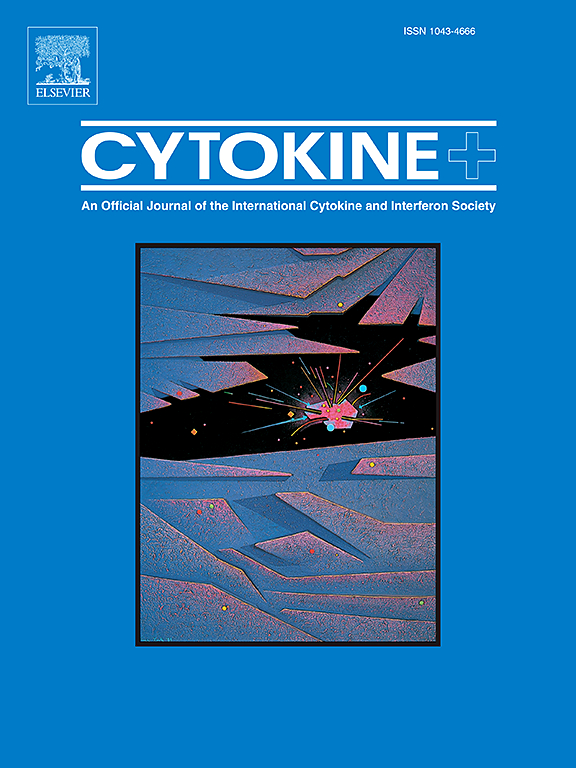The role of IL-39 in autoimmune diseases: From general to immunopathogenesis
IF 3.7
3区 医学
Q2 BIOCHEMISTRY & MOLECULAR BIOLOGY
引用次数: 0
Abstract
IL-39, a cytokine from the IL-12 family that appears to be produced primarily by B cells, consists of the IL-23p19 and Ebi3 subunits, which signal through IL-23R/gp130 to activate STAT1/STAT3. Some studies suggest elevated IL-39 levels in certain autoimmune conditions, such as relapsing-remitting multiple sclerosis (RRMS), ankylosing spondylitis (AS), and autoimmune thyroid disease (ATD), possibly indicating a link between IL-39 and autoimmunity mediated by B cells. Preliminary evidence indicates that IL-39 might stimulate NETosis in neutrophils and promote BAFF (B-cell activating factor) secretion, which theoretically, in turn, may activate IL-39 production, T-cell-independent IgA isotype switching and somatic hypermutation. Some reports have revealed correlations between IL-39 and disease-specific autoantibodies, including RF and ACPAs in rheumatoid arthritis (RA), anti-dsDNA in systemic lupus erythematosus (SLE), and anti-AQP4 antibodies in neuromyelitis optica spectrum disorder (NMOSD), although these associations require further confirmation. Theoretically, through NETosis, IL-39 could potentially expose intracellular antigens and facilitate their citrullination via peptidyl arginine deiminase (PAD), which might contribute to autoimmunity initiation. Some data suggest that in P. gingivalis-associated dysbiosis, IL-36γ may increase IL-39 secretion by epithelial cells. As dysbiosis and inflammatory bowel disease (IBD) increase gut permeability and LPS exposure—a possible stimulus for IL-39 production—the relationships among IL-39, gut dysbiosis, and autoimmunity appear to warrant further investigation. While some studies have reported conflicting results regarding the immunological activity of IL-39 in humans, these theoretical considerations suggest the need for more rigorous, standardized research, as current investigations remain limited by small sample sizes and heavy reliance on animal models or in vitro studies rather than comprehensive human studies examining the biological effects of IL-39.

IL-39在自身免疫性疾病中的作用:从一般到免疫发病机制
IL-39是IL-12家族的一种细胞因子,主要由B细胞产生,由IL-23p19和Ebi3亚基组成,它们通过IL-23R/gp130发出信号来激活STAT1/STAT3。一些研究表明,在某些自身免疫性疾病,如复发-缓解型多发性硬化症(RRMS)、强直性脊柱炎(as)和自身免疫性甲状腺疾病(ATD)中,IL-39水平升高,可能表明IL-39与B细胞介导的自身免疫之间存在联系。初步证据表明,IL-39可能刺激中性粒细胞NETosis并促进BAFF (b细胞活化因子)分泌,从理论上讲,BAFF反过来可能激活IL-39的产生、t细胞非依赖性IgA同型转换和体细胞超突变。一些报道揭示了IL-39与疾病特异性自身抗体之间的相关性,包括类风湿关节炎(RA)中的RF和ACPAs,系统性红斑狼疮(SLE)中的抗dsdna,以及视神经脊髓炎谱系障碍(NMOSD)中的抗aqp4抗体,尽管这些相关性需要进一步证实。理论上,通过NETosis, IL-39可能潜在地暴露细胞内抗原,并通过肽基精氨酸脱亚胺酶(PAD)促进其瓜氨酸化,这可能有助于自身免疫的启动。一些数据表明,在牙龈卟啉卟啉相关的生态失调中,IL-36γ可能增加上皮细胞分泌IL-39。随着生态失调和炎症性肠病(IBD)增加肠道通透性和LPS暴露(可能刺激IL-39的产生),IL-39、肠道生态失调和自身免疫之间的关系似乎值得进一步研究。虽然一些研究报告了关于IL-39在人类中的免疫活性的相互矛盾的结果,但这些理论上的考虑表明,需要进行更严格、标准化的研究,因为目前的研究仍然受到样本量小、严重依赖动物模型或体外研究的限制,而不是全面的人体研究来检查IL-39的生物学效应。
本文章由计算机程序翻译,如有差异,请以英文原文为准。
求助全文
约1分钟内获得全文
求助全文
来源期刊

Cytokine
医学-免疫学
CiteScore
7.60
自引率
2.60%
发文量
262
审稿时长
48 days
期刊介绍:
The journal Cytokine has an open access mirror journal Cytokine: X, sharing the same aims and scope, editorial team, submission system and rigorous peer review.
* Devoted exclusively to the study of the molecular biology, genetics, biochemistry, immunology, genome-wide association studies, pathobiology, diagnostic and clinical applications of all known interleukins, hematopoietic factors, growth factors, cytotoxins, interferons, new cytokines, and chemokines, Cytokine provides comprehensive coverage of cytokines and their mechanisms of actions, 12 times a year by publishing original high quality refereed scientific papers from prominent investigators in both the academic and industrial sectors.
We will publish 3 major types of manuscripts:
1) Original manuscripts describing research results.
2) Basic and clinical reviews describing cytokine actions and regulation.
3) Short commentaries/perspectives on recently published aspects of cytokines, pathogenesis and clinical results.
 求助内容:
求助内容: 应助结果提醒方式:
应助结果提醒方式:


